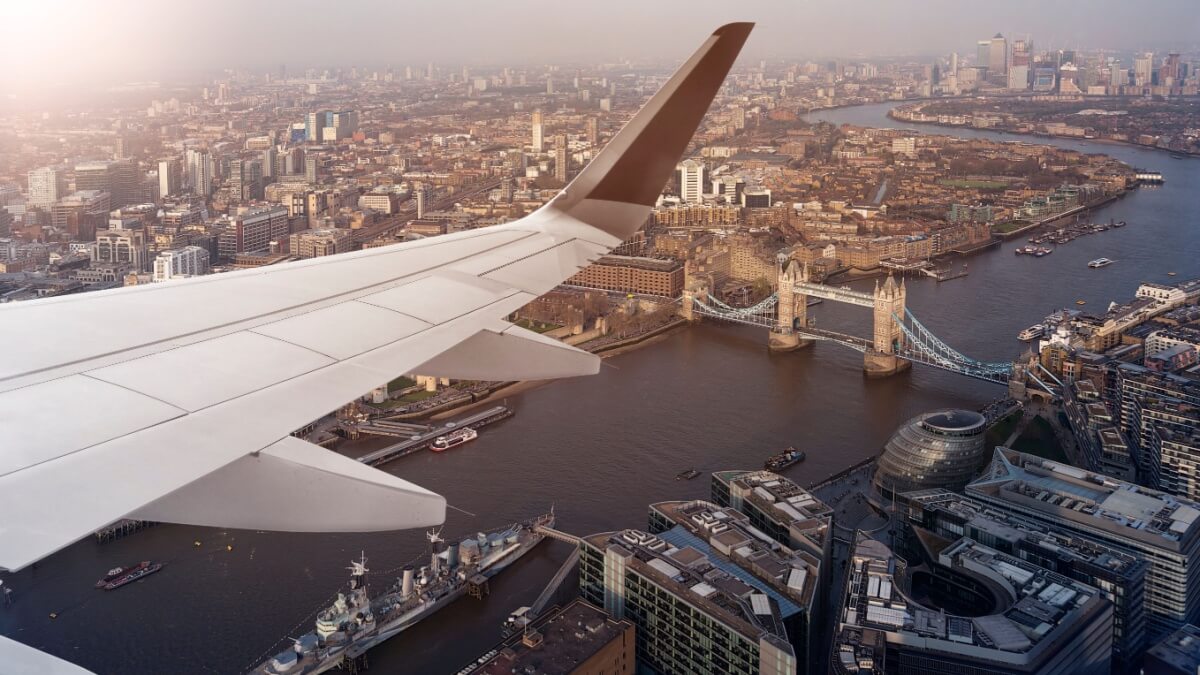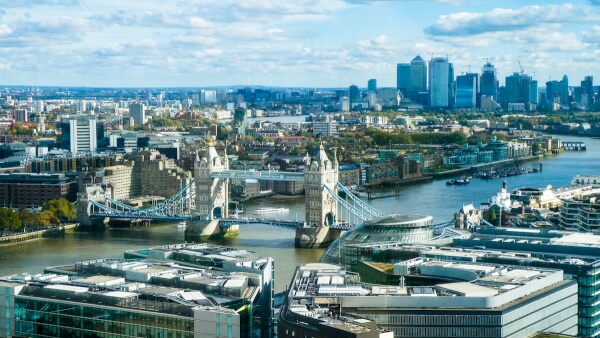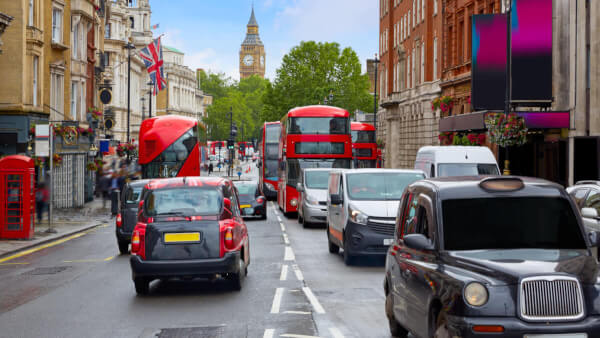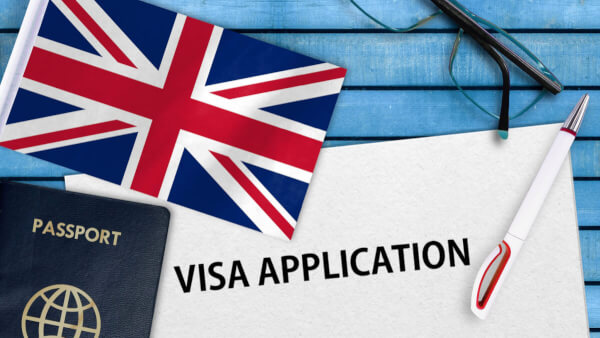Using Amex in the UK: What you need to know
Read our essential guide to using Amex in the UK, including which brands and retailers accept it, fees, cash withdrawals and much more.

The UK is moving from physical immigration documents to digital records. Wondering if you need to apply for an eVisa?
This guide explains the details, whether you’re planning a move, already living in the UK, or have an expired biometric residence permit (BRP). Find out how to prove your immigration status and travel with confidence.
Travelling soon? Make your money go further with a Wise account. Spend in 40+ currencies with the mid-market exchange rate and no hidden fees*.
An eVisa is an online record of who you are, your immigration status and its conditions.1 For example, it shows the type of visa you have and whether you’re allowed to work or study in the UK.
An eVisa is digitally linked to your passport via your UK Visas and Immigration (UKVI) account.2
Keep in mind, an eVisa isn’t the same as a visa. A visa gives you permission to stay in the UK while an eVisa is simply proof of that permission.
Also, don’t confuse an eVisa with the Electronic Travel Authorisation (ETA). An ETA lets people visit the UK for up to 6 months, usually for tourism or visiting family. It’s not for those who want to live or work in the UK.3
Biometric residence permits (BRPs) are physical documents that were used to prove immigration status. You might have one if you were given permission to live in the UK on or before 31 October 2024. The UK has now replaced BRPs with eVisas, which are digital rather than physical.5
All BRPs are now expired. But that doesn’t mean you’ve lost your right to stay in the UK, it just means you can’t use your BRP to prove it.4
But don’t throw your expired BRP away. You can use it up to 18 months after expiry to do things like:
Planning a trip abroad? From 1 June 2025, you can no longer travel on an expired BRP. Make sure you have access to an eVisa before going anywhere.6
A UK passport is an identity document that proves you’re a British or Irish national. It gives you the right to enter and leave the UK freely, and proves you have full citizenship rights.
An eVisa proves you have permission to stay in the UK if you’re not a UK citizen. It’s linked to your non-UK passport, allowing you to travel to and from the country.
No, an eVisa doesn’t replace your passport.** Always take your passport when travelling**, and make sure it matches the one linked to your eVisa.7
eVisas are becoming the new global standard, with countries like Australia, the US and Canada already using them.
The UK government says eVisas are safer, faster, and more convenient because they:
You generally need an eVisa if you:
Got a visa application in the works? You’ll be told if an eVisa applies to you when you get the final visa decision.
You don’t need an eVisa if you:
Not necessarily, but it’s encouraged. At the moment you can continue using a physical document (like a stamp or sticker in your passport) to prove your settled status when travelling or renting.2
However an eVisa can make it easier to prove your rights in the UK, especially if you’re applying for a job or getting a new passport.9
If you want digital proof of your indefinite leave to remain, make a No Time Limit (NTL) eVisa application. You’ll need:
If you have citizenship with more than one country, make sure your eVisa is linked to the passport you plan to travel with. You can add more than one passport in your UKVI account.10
You don’t need an eVisa if you’re British or Irish — even if you have another nationality. Just travel on your UK passport to leave and enter the country.7
Your UK eVisa will show:
Your UKVI account holds additional information, including things like:11
You can view your eVisa at any time. You can also share proof of your immigration status by logging in to your UKVI account and generating a ‘share code’. For example, this is useful when travelling, applying for a job, renting a home or claiming benefits.
You’ll need to give the share code along with your date of birth to the person or organisation checking your status. You’ll be told exactly what information they’ll be able to see.
You can create a new share code at any time. They last for 90 days and can be used as many times as needed before they expire.12
You can make an eVisa application online through the UK government’s website. It doesn’t cost anything.
You should already have a UKVI account if you:
Not sure? Try logging in to view your eVisa.
To create a UKVI account, you’ll need either:
You’ll also be asked for your date of birth, email address and phone number. 2
Log in to your UKVI account and start the eVisa application process.
If you have a smartphone, you can install the UK Immigration: ID Check app to confirm your identity. It will ask you to:
If you can’t access the app or don’t have a valid passport or expired BRP, visit the UKVI website to find another way to verify your identity.
Once you’ve created your account, you’ll be asked to link your visa or immigration status to your passport.
Make sure you’ve completed the sections asking you to confirm your:
Next, read the declaration, confirm you’ve read it and select “Submit”. You’ll get an email when your eVisa is ready to view, which can take a few days in some cases.
It’s free to apply for a UK eVisa.10 Keep in mind, an eVisa is only proof of permission to stay in the UK. If you don’t have permission yet, you might need to apply for a visa and that usually comes with a fee.
Some countries make it easier for UK residents to enter. Places that previously allowed entry with a BRP are expected to offer similar access to people with a UK eVisa. That said, guidance is still evolving so always check with the country’s immigration authority before you travel.
Here are examples of countries that generally have special entry arrangements for UK residents: 13
| Country | Region | Duration |
|---|---|---|
| Albania | Europe | Up to 90 days |
| Montenegro | Europe | Up to 30 days |
| Georgia | Europe | 90 days/180-day |
| North Macedonia | Europe | Up to 15 days |
| Gibraltar | Europe | Up to 21 days |
| Panama | Americas/Caribbean | Up to 90 days |
| Jamaica | Americas/Caribbean | Up to 30 days |
| Dominican Republic | Americas/Caribbean | Up to 90 days |
| Aruba, Curaçao, St. Maarten | Americas/Caribbean | Up to 30 days |
| Anguilla | Americas/Caribbean | Up to 90 days |
| Malaysia | Asia | Up to 90 days |
| Seychelles | Africa | Up to 30 days |
| Fiji | Oceania | Up to 120 days |
| Country | Region | Duration |
|---|---|---|
| Indonesia | Asia | Up to 30 days |
| Maldives | Asia | Up to 30 days |
| Bahrain | Asia | 14 days |
| Country | Region | Duration |
|---|---|---|
| Sri Lanka | Asia | 30 days |
| Taiwan | Asia | Up to 30 days |
| Kenya | Africa | Up to 90 days |
| Country | Region | Duration |
|---|---|---|
| Canada | Americas/Caribbean | Varies |
| Australia | Oceania | Varies |
No, a UK eVisa doesn’t give you special access to the Schengen Zone.
The Schengen Zone is a group of 29 European countries that have removed passport and border checks between each other.
Citizens of some countries — including the UK — are allowed visa-free travel in the Schengen Area for up to 90 days in a 180-day period. Otherwise, you usually need to apply for a Schengen visa.14
Check the official European Union website to see if you need a Schengen visa.15
If you don’t qualify for visa-free travel, it’s worth looking for the easiest Schengen visa to apply for.
A Wise account makes it easier to deal with money in 40+ currencies, whether you’re sending money home, spending while travelling or getting paid from overseas.
Enjoy the mid-market exchange rate, local account details and a Wise card you can use in 150+ countries.
Sources used in this article:
1. Gov.uk - what an eVisa is
2. Gov.uk - setting up a UKVI account and eVisa information
3. Gov.uk - ETA information
4. Gov.uk - biometric residence permit replacement information
5. Gov.uk - eVisa rollout
6. Parliament.uk - from 1 June 2025, you can no longer travel on an expired BRP
7. Gov.uk - travelling with an eVisa
8. Home Office - eVisa benefits
9. Gov.uk - indefinite leave to remain
10. Citizens Advice - eVisa info and passport rights
11. https://www.gov.uk/evisa/update-ukvi-account - details on UKVI account
12. Gov.uk -eVisa share code
13. Savory and Partners - UK visa-free countries
14. AXA Schengen - visa-free Schengen Area travel
15. European Union Home Affairs - countries that require a Schengen visa
Sources last checked on 03-Aug-2025
*Please see terms of use and product availability for your region or visit Wise fees and pricing for the most up to date pricing and fee information.
This publication is provided for general information purposes and does not constitute legal, tax or other professional advice from Wise Payments Limited or its subsidiaries and its affiliates, and it is not intended as a substitute for obtaining advice from a financial advisor or any other professional.
We make no representations, warranties or guarantees, whether expressed or implied, that the content in the publication is accurate, complete or up to date.

Read our essential guide to using Amex in the UK, including which brands and retailers accept it, fees, cash withdrawals and much more.

Travelling to the UK? Read our guide to the new ETA UK visa, including who needs it, how to apply, fees and UK ETA requirements.

Essential read for foreigners driving in the UK with a full breakdown of requirements, driving rules and documentation – be prepared for your next trip.

A guide writing an invitation letter for the UK visa, covering everything you need to know.

London is renowned for its vibrant LGBTQIA+ scene, offering a diverse range of events, bars, and clubs that cater to all identities and expressions. The city...

A guide to St Andrew’s Day, including what and when it is, and how it’s traditionally celebrated in Scotland.